Abstract
Power consumption in communication networks and the supporting computing systems continues to increase due to the increase in traffic and processing requirements, and due to the relatively slower improvements in energy efficiency. Future networks are expected to continue to move computing algorithms and capabilities into the network including increased use of analytics, machine learning and intelligence applied to big data in the network, with content caching and virtualization. This level of flexibility in networks can lead to substantial power savings of up to 86% by being able to move content to where it is most popular. This article summarizes the key features of five new IEEE standards currently being developed to improve the energy efficiency of networks beyond 5G.
Introduction
The traffic in access and core networks continues to grow driven by new applications of the Internet of Things (IoT), machine to machine communication, high definition video, high data rate mobile traffic – such as in 5G and beyond and the increasing use of machine learning and artificial intelligence applied to big data carried by the network [1]. Traffic is currently growing at 30% – 40% per year on average [1] and if the current trends are sustained, this can lead to traffic doubling every two years, increasing by 30x in 10 years and 1000x in 20 years. The power consumption of the networks and the clouds and edge processing in the network can increase therefore by corresponding amounts. This led to the 1000x energy efficiency challenge in future networks. The solution to this challenge was originally pioneered by the GreenTouch consortium of 50 industrial and academic member organizations [2]. If the networks energy efficiency can be improved by 1000x, then in 20 years, networks can consume the same amount of energy as today while carrying 1000x more traffic. GreenTouch is a research consortium comprised of industry, academic and non-governmental experts that are united by the same goal of transforming communication and data networks, paying special attention to reducing the power consumption of ICT devices, platforms and networks. The GreenTouch consortium established the GreenMeter as a measure to assess the energy efficiency improvements it achieved in relation to its 1000x improvement target.
Concurrently, a number of tools migrated from computing to networking including virtualization, caching and analytics. These tools can be used to improve the energy efficiency of 5G networks and beyond. For example, content can be cached near end users to reduce the journeys up and down the network when accessing content, thus resulting in power savings [3]. Virtualization can help improve resource utilization, thus resulting in power savings [4] – [6]. Furthermore, analytics can help learn about the network and optimize its operation in addition to learning about the user and hence optimizing the services [7], [8]. Figure 1 shows a network architecture which includes the core network, metro network segments and the access networks supported. It provides processing capabilities in the access layer in the form of access fog units, in the metro layer in the form of metro fog and in central clouds connected to core network nodes.
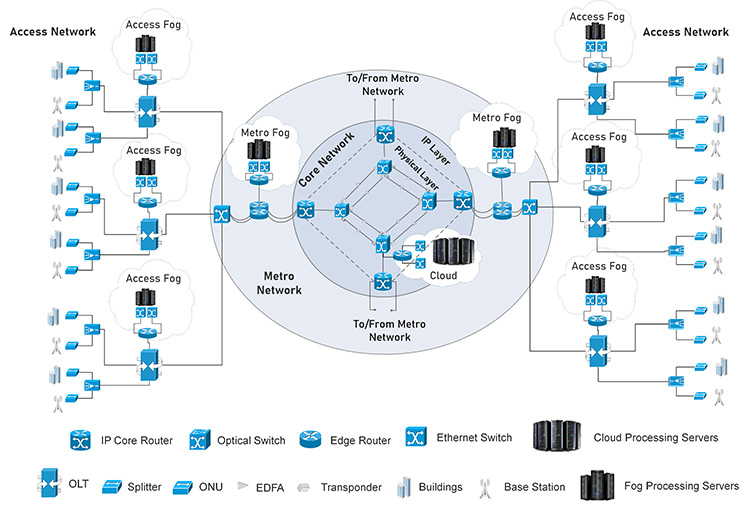
Figure 1: Energy Efficient Network Virtualization and Content Distribution in Beyond 5G Access
The IEEE is developing a number of standards for energy efficient operation of networks in the presence of virtualization, content caching and big data analytics which can be understood by referring to the architecture in Fig. 1. The standards are IEEE P1925.1, IEEE P1926.1, IEEE P1927.1, IEEE P1928.1 and IEEE P1929.1 [9].
This article summarizes the key features of these five new IEEE standards currently being developed to improve the energy efficiency of networks beyond 5G.
The Standards
In many network segments, the traffic may not fill a transponder capacity or alternatively may just exceed the capacity of a single transponder, which calls for the use of two transponders. In both cases the unused transponder capacity leads to energy wastage. An alternative is to use mixed line rates where transponders operating at different data rates are used. These may include transponders operating at 10 Gb/s, 40 Gb/s, 100 Gb/s, 400 Gb/s and beyond. There is thus a correct combination of transponders that results in power consumption minimization. A similar result can be achieved if the transponders used adaptive line rates based on optical orthogonal frequency division multiplexing (OFDM) [2], [10]. The IEEE P1925.1 “Standard for Energy Efficient Dynamic Line Rate Transmission System” focuses on the energy efficiency of these systems by introducing the architecture and mechanisms needed to enable the use of an optimal combination of line rates to accommodate the traffic while reducing power consumption by up to 55% in the examples considered [10].
User content generated at the edge of the network can aggregate and form big data streams. If such big data streams are transmitted to cloud data centres in the core network in Fig. 1 for processing, then significant power may be consumed. A key observation however is that users are generally interested in the knowledge embedded in the big data and not in the data stream itself. Consider an example where a heart rate monitor measures and transmits big data (due to its complex waveforms and multiple measurements) to a central data centre for processing. This data will hopefully repeatedly indicate that the person is fine for the next 30 years for example. Therefore, sending the full data may be redundant. Instead the big data stream can be processed at the edge of the network to extract incidents, i.e. knowledge, and transmit these incidents when the person needs help instead of transmitting the full data. The network therefore carries knowledge and not data. This form of big data edge processing can reduce latency and can save power (a saving of 52% in the example in [11]) by reducing the amount of data flowing in the network. This has to be done while paying attention to the key attributes of big data which include its Volume, its Velocity (meaning that it can be time sensitive and fast changing), its Variety (coming from multiple sources and sensors) and its Veracity [7], [8], [11]. This concept is introduced in IEEE P1926.1 a “Standard for a Functional Architecture of Distributed Energy Efficient Big Data Processing”.
The network in Fig. 1 can be virtualized to provide network slices to different users and different applications in an energy efficient manner. A user may request a network virtual slice that contains dedicated access to part of the capacity of core routers, core optical switches / multiplexers and demultiplexers, as well as dedicated access to part of the capacity of the fibre links interconnecting these nodes. In this way resources can be consolidated in the network which can lead to power savings of up to 60% [4]. In addition, the slice may contain certain computational and storage resources at the core network clouds and further computational and storage resources at the metro fog and access fog and the interconnecting networks [4] – [6]. Orchestrating these network resources in an energy efficient manner is the subject of IEEE P1927.1 “Standard for Services Provided by the Energy-efficient Orchestration and Management of Virtualized Distributed Data Centers Interconnected by a Virtualized Network”.
In several scenarios user computations may be carried out in virtual machines. Virtualization is employed in the cloud-fog architecture to satisfy the needs of the users to rapidly grow and shrink the usage of the data centre physical resources. Several logical entities (called virtual machines) are created by abstracting the datacenter resources in an efficient and isolated manner. The creation of these virtual machines can support multiple applications, which run on a shared hardware while being logically isolated from each other. It is usually preferable to place such virtual machines in the architecture in Fig. 1 as close to the end user as possible [2], [5]. For example, in the access fog processing units. As time progresses, users in a different part of the network may become interested in the services provided by this virtual machine while the original users may no longer be interested in the virtual machine due to time differences between the two user groups and work / entertainment switch over for example. In this case the virtual machine can be migrated to near the new set of users. In other cases, users interested in a given virtual machine may be at remote ends of the network. In such a case it may be necessary to replicate the virtual machines in a manner that minimizes power consumption with power savings up 64% [2]. Finally, the hardware over which the virtual machine is implemented may have power consumption that is proportional to the load placed on the virtual machine. Here, it may be possible to slice the virtual machine and make several copies of the virtual machine, where all the copies collectively consume an amount of power equal to that consumed by one large virtual machine that runs all the tasks. This optimized, energy efficient placement of virtual machines is the subject of IEEE P1928.1, a “Standard for a Mechanism for Energy Efficient Virtual Machine Placement”.
Finally, video represents, by some estimates, over 80% of the overall traffic volume in networks. A large part of the video traffic consumed is attributed to a small number of very popular videos. For instance, a video library that has few hundred million videos, may have 50 to 100 videos that account for 80 percent of the requests, the well-known heavy tail Zipf distribution. If these few videos are cached locally, in the access fog or metro fog in Fig. 1 instead of being stored in the central cloud, then the network power consumption associated with retrieving these videos from the central library can be decreased by up to 86% [3]. The addition of network video caching hardware increases the overall hardware power consumption. This is tensioned against the power saved as a result of caching. As such an optimum video cache size exists that results in power minimization in the network [2], [3]. The IEEE P1929.1 standard “An Architectural Framework for Energy Efficient Content Distribution” addresses this problem.
The five IEEE Energy Efficient standards currently being developed to improve the energy efficiency of ICT are summarized in Table 1.
| Standards (all of which can work with other standards) | Methodology | Energy Savings | Network Segment | Mechanisms Explained | ||
| Access | Metro | Core | ||||
| IEEE P1925.1 | optimum use of correct combination of line rates [1]. | 31% – 55%, in selected example | ✓ | Mixed line rates and Optical OFDM techniques are utilized to enable elastic optical networks to support heterogeneous traffic demands by enabling rate and modulation adaptive bandwidth allocation. | ||
| IEEE P1926.1 | progressive processing of big data leading to reduction of traffic flow [10]. | 47% – 52%, in selected example | ✓ | ✓ | ✓ | Knowledge is extracted from big data streams by processing the data at the source, edge, and intermediate processing nodes, thus leading to reduced latency and energy consumption. |
| IEEE P1927.1 | Optimized virtualization with server packing and minimum hop routing [4]. | 60%, in selected example | ✓ | ✓ | ✓ | Virtualization is used to allow for on demand allocation of processing and networking resources in cloud networks which results in improved utilization of resources and thus leading to power savings. |
| IEEE P1928.1 | Virtual machine migration, replication and slicing [2]. | 56%- 64%, in selected example | ✓ | ✓ | ✓ | End user computation requests are encapsulated by Virtual Machines that may be placed in fog units as close as possible to the end user subject to factors such as migration, replication and slicing. |
| IEEE P1929.1 | Optimum placement of content [3]. | 86%, in selected example | ✓ | ✓ | ✓ | Knowledge of content behavior and popularity is used to optimally store cached versions in fog nodes closer end users, and cache hit ratios are maximized to minimize energy use. |
Table 1 A summary of the methodologies, power savings, network location and mechanisms used in the five standards currently being developed.
The work in [2] shows how the measures captured in these five standards can be used together to result in a power saving of 315x. The balance of the 1000x power saving sought was achieved by GreenTouch through additional savings in the RAN and wireless interface.
Conclusions and Future Work
A number of standards are being developed to improve the energy efficiency of future big data networks, content distribution networks, and virtualized networks. The standards take into account the network architecture, the hardware and the algorithms needed to orchestrate, manage and provision the networks. It has been shown through optimization techniques that, it is possible to achieve substantial amounts of power savings that can be as high as 86%. Future work will address the expected increased use of machine learning, and intelligence in networks to improve energy efficiency, and to provide a better fit between the users, services and network.
Acknowledgements
We would like to acknowledge funding from the Engineering and Physical Sciences Research Council (EPSRC), INTERNET (EP/H040536/1), STAR (EP/K016873/1) and TOWS (EP/S016570/1) projects.
References
- Cisco Annual Internet Report (2018–2023), https://www.cisco.com/c/en/us/solutions/ collateral/executive-perspectives/annual-internet-report/white-paper-c11-741490.pdf
- M. H. Elmirghani, T. Klein, K. Hinton, L. Nonde, A. Q. Lawey, T. E. H. El-Gorashi, M. O. I. Musa, and X. Dong, “GreenTouch GreenMeter core network energy-efficiency improvement measures and optimization,” IEEE/OSA Journal of Optical Communications and Networking, vol. 10, no. 2, pp. A250-A269, Feb 2018.
- I. Osman, T. El-Gorashi, L. Krug, and J. M. H. Elmirghani, “Energy Efficient Future High-Definition TV,” Journal of Lightwave Technology, vol. 32, no. 13, pp. 2364-2381, July 2014.
- Nonde, T.E.H. El-Gorashi, and J.M.H. Elmirghani, “Energy Efficient Virtual Network Embedding for Cloud Networks,” IEEE/OSA Journal of Lightwave Technology, vol. 33, No. 9, pp. 1828-1849, 2015.
- N. Al-Quzweeni, A. Lawey, T.E.H. El-Gorashi, and J.M.H. Elmirghani, “Optimized Energy Aware 5G Network Function Virtualization,” IEEE Access, vol. 7, pp. 44939 – 44958, 2019.
- Al-Azez, Z., Lawey, A., El-Gorashi, T.E.H., and Elmirghani, J.M.H., “Energy Efficient IoT Virtualization Framework with Peer to Peer Networking and Processing” IEEE Access, vol. 7, pp. 50697 – 50709, 2019.
- S. Hadi, A. Lawey, T.E.H. El-Gorashi, and J.M.H. Elmirghani, “Patient-Centric Cellular Networks Optimization using Big Data Analytics,” IEEE Access, pp. 49279 – 49296, vol. 7, 2019.
- S. Hadi, A. Lawey, T.E.H. El-Gorashi, and J.M.H. Elmirghani, “Patient-centric HetNets Powered by Machine Learning and Big Data Analytics for 6G Networks,” IEEE Access, vol. 8, 2020.
- IEEE Green ICT Standards Committee, https://standards.ieee.org/project/1925_1.html, [Accessed April 2020].
- Dong, T.E.H. El-Gorashi and J.M.H. Elmirghani, “Green optical orthogonal frequency-division multiplexing networks,” IET Optoelectronics, vol. 8, No. 3, pp. 137 – 148, 2014.
- M. Al-Salim, A. Lawey, T.E.H. El-Gorashi, and J.M.H. Elmirghani, “Energy Efficient Big Data Networks: Impact of Volume and Variety,” IEEE Transactions on Network and Service Management, vol. 15, No. 1, pp. 458 – 474, 2018.
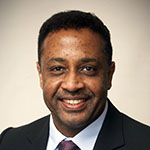 Jaafar Elmirghani is FIET, FIoP, and Director of the Institute of Communication and Power Networks, Leeds. He was PI of the £6m EPSRC Intelligent Energy Aware Networks (INTERNET) project, 2010-2016 and is Co-Chair of the IEEE Sustainable ICT Initiative. He was awarded the IEEE Comsoc 2005 Hal Sobol award, 2 IEEE Comsoc outstanding service awards (2009, 2015), the 2015 GreenTouch 1000x award, IET Optoelectronics 2016 Premium Award and shared the 2016 Edison Award for work on the GreenMeter. His work led to 5 IEEE standards. He is PI of the EPSRC £6.6m TOWS project, 2019-2024. He has over 500 publications.
Jaafar Elmirghani is FIET, FIoP, and Director of the Institute of Communication and Power Networks, Leeds. He was PI of the £6m EPSRC Intelligent Energy Aware Networks (INTERNET) project, 2010-2016 and is Co-Chair of the IEEE Sustainable ICT Initiative. He was awarded the IEEE Comsoc 2005 Hal Sobol award, 2 IEEE Comsoc outstanding service awards (2009, 2015), the 2015 GreenTouch 1000x award, IET Optoelectronics 2016 Premium Award and shared the 2016 Edison Award for work on the GreenMeter. His work led to 5 IEEE standards. He is PI of the EPSRC £6.6m TOWS project, 2019-2024. He has over 500 publications.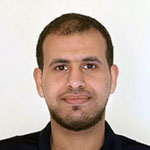 Hatem A. Alharbi received the B.Sc. degree in Computer Engineering (Hons.) from Umm Alqura University, Makkah, Saudi Arabia in 2012, the M.Sc. degree in Digital communication networks (with distinction) in 2015, and the PhD degree in communication networks in 2020, from the University of Leeds, Leeds, UK. He is currently a Lecturer in Computer Engineering Department in the School of Computer Science and Engineering, University of Taibah, Saudi Arabia. His research interests are in energy efficient fog and cloud networks and network economics.
Hatem A. Alharbi received the B.Sc. degree in Computer Engineering (Hons.) from Umm Alqura University, Makkah, Saudi Arabia in 2012, the M.Sc. degree in Digital communication networks (with distinction) in 2015, and the PhD degree in communication networks in 2020, from the University of Leeds, Leeds, UK. He is currently a Lecturer in Computer Engineering Department in the School of Computer Science and Engineering, University of Taibah, Saudi Arabia. His research interests are in energy efficient fog and cloud networks and network economics. Azza E. A. Eltraify is a postgraduate researcher in the University of Leeds, Leeds, UK, working on communication networks and systems. She received her M.Sc. degree in Networks Systems and Architectures from University of Khartoum, Sudan, in 2014. She worked at the University of Leeds as a research fellow in optimising power efficiency and developing PON Architectures for future data centres. She led the development of several experiments on data centre architectures. She is currently the general Secretary of IEEE GreenICT and IEEE Energy Efficient ICT working group focusing on developing energy efficient standards for Data Centres and Core Networks
Azza E. A. Eltraify is a postgraduate researcher in the University of Leeds, Leeds, UK, working on communication networks and systems. She received her M.Sc. degree in Networks Systems and Architectures from University of Khartoum, Sudan, in 2014. She worked at the University of Leeds as a research fellow in optimising power efficiency and developing PON Architectures for future data centres. She led the development of several experiments on data centre architectures. She is currently the general Secretary of IEEE GreenICT and IEEE Energy Efficient ICT working group focusing on developing energy efficient standards for Data Centres and Core Networks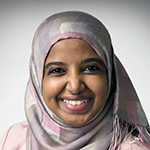 Sanaa Hamid Mohamed received the B.Sc. degree (honors) in electrical and electronic engineering from University of Khartoum in 2009, the M.Sc. degree in electrical engineering from American University of Sharjah in 2013, and the PhD degree in electronic and electrical engineering from University of Leeds in 2020. She received a graduate teaching assistantship from AUS and a Doctoral Training Award from EPSRC. She is an IEEE member since 2008 and a member of IEEE communication, photonics, cloud computing, software defined networks, and sustainable ICT societies. Her research interests include wireless and optical communications, data centers, and cloud and fog computing.
Sanaa Hamid Mohamed received the B.Sc. degree (honors) in electrical and electronic engineering from University of Khartoum in 2009, the M.Sc. degree in electrical engineering from American University of Sharjah in 2013, and the PhD degree in electronic and electrical engineering from University of Leeds in 2020. She received a graduate teaching assistantship from AUS and a Doctoral Training Award from EPSRC. She is an IEEE member since 2008 and a member of IEEE communication, photonics, cloud computing, software defined networks, and sustainable ICT societies. Her research interests include wireless and optical communications, data centers, and cloud and fog computing. Barzan A. Yosuf received the BEng (Hons) degree in computer systems engineering, in 2012 and the MSc degree in embedded systems engineering in 2013, from the University of Huddersfield, Huddersfield, UK, and the Ph.D. degree with the School of Electronic and Electrical Engineering, in energy efficient distributed processing for IoT from the University of Leeds, UK, in 2019. His current research interests include IoT, fog and cloud computing energy optimization. He is currently a member of the IEEE Energy Efficient ICT working group, which focuses on developing improved energy efficient standards in areas such as big data processing over core networks, network virtualization and VM placement in the presence of access fog and core clouds.
Barzan A. Yosuf received the BEng (Hons) degree in computer systems engineering, in 2012 and the MSc degree in embedded systems engineering in 2013, from the University of Huddersfield, Huddersfield, UK, and the Ph.D. degree with the School of Electronic and Electrical Engineering, in energy efficient distributed processing for IoT from the University of Leeds, UK, in 2019. His current research interests include IoT, fog and cloud computing energy optimization. He is currently a member of the IEEE Energy Efficient ICT working group, which focuses on developing improved energy efficient standards in areas such as big data processing over core networks, network virtualization and VM placement in the presence of access fog and core clouds.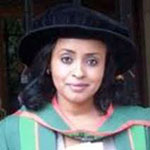 Taisir Elgorashi is currently a Lecturer in optical networks with the School of Electrical and Electronic Engineering, University of Leeds. Previously, she held a Postdoctoral research post at the University of Leeds, from 2010 to 2014, where she focused on the energy efficiency of optical networks investigating the use of renewable energy in core networks, distributed cloud computing, virtualization and big data. The energy efficiency techniques developed during her Postdoctoral research contributed three out of eight carefully chosen core network energy efficiency improvement measures recommended by the GreenTouch consortium for every operator network worldwide.
Taisir Elgorashi is currently a Lecturer in optical networks with the School of Electrical and Electronic Engineering, University of Leeds. Previously, she held a Postdoctoral research post at the University of Leeds, from 2010 to 2014, where she focused on the energy efficiency of optical networks investigating the use of renewable energy in core networks, distributed cloud computing, virtualization and big data. The energy efficiency techniques developed during her Postdoctoral research contributed three out of eight carefully chosen core network energy efficiency improvement measures recommended by the GreenTouch consortium for every operator network worldwide.